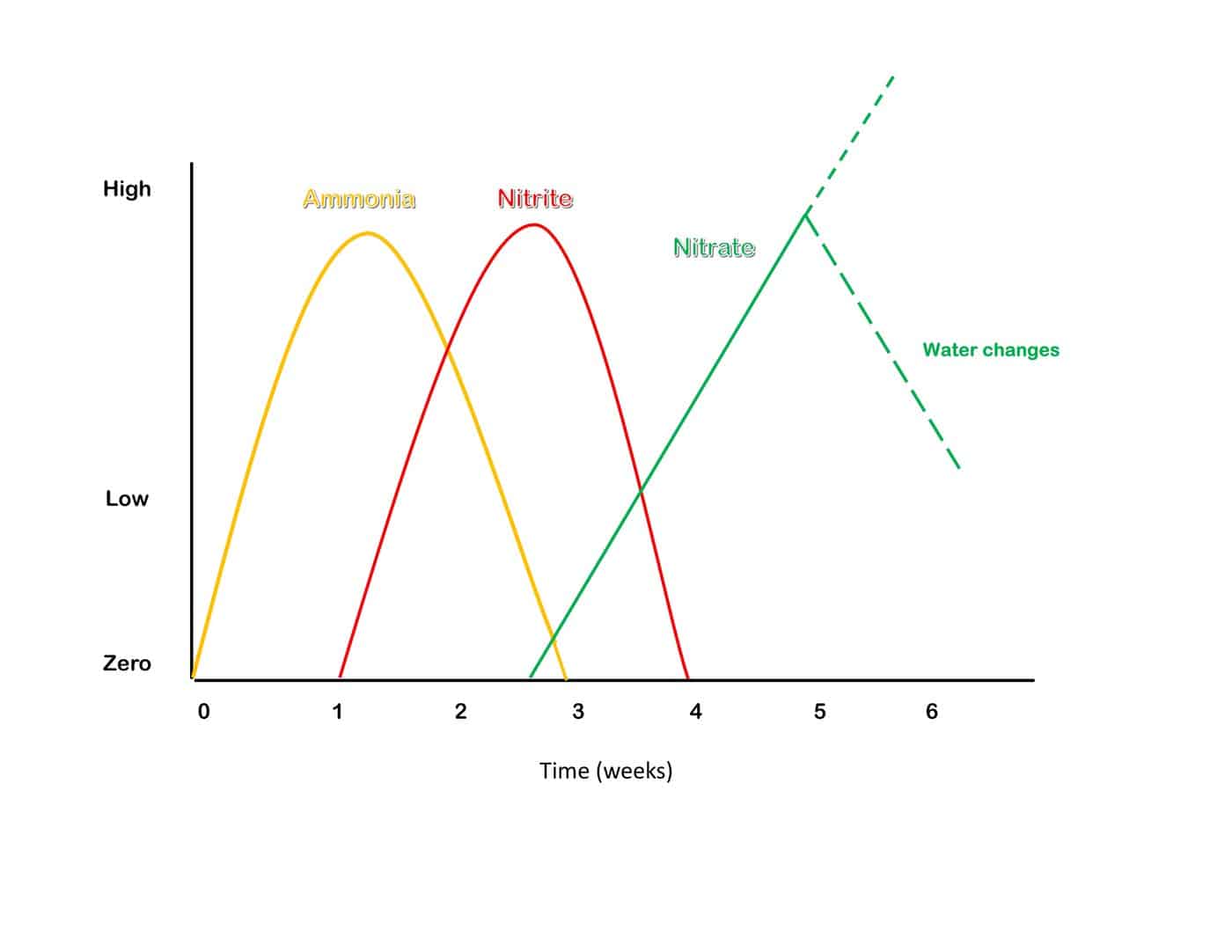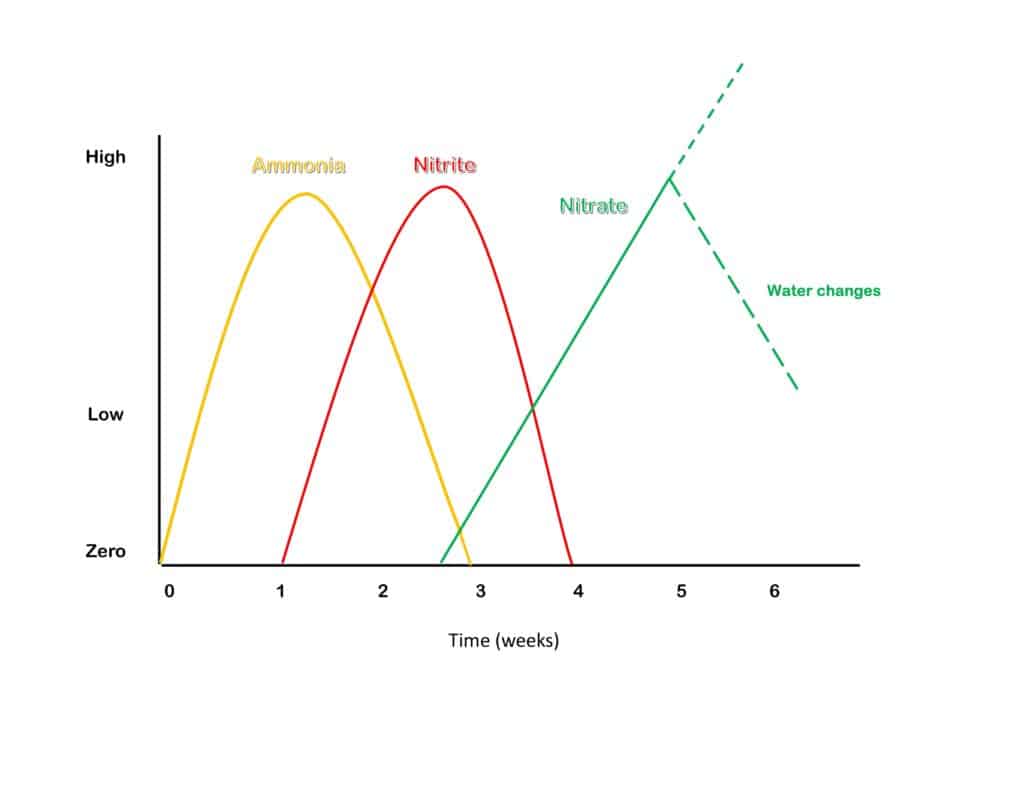The biggest hurdle for new fish owners is New Tank Syndrome. When you set up a new fish tank for the first time, there are a few things you can expect to happen that can severely impact your fish’s survival.
With a brand new filter, your nitrogen cycle has not been established. It will take 4-6 weeks MINIMUM to start cycling your new tank. There are countless products who claim they can instantly start your cycle, but they DO NOT WORK. We tested many products and only one was able to shorten our cycle by one week.
During those sensitive weeks, your tank will undergo the following spikes in ammonia, nitrite and finally, nitrate, as those bacteria colonies are established. You tank’s temperature and filtration capacity will determine how fast your cycle is established.

How do I avoid New Tank Syndrome?
As your nitrogen cycle is established, your fish can be in danger of toxic levels of ammonia and nitrite. Therefore, it is essential to keep you bioload low in those first few weeks! Rather than fully stocking your tank from the get-go, start with only a few, hardy fish until your cycle is established. Keep a close eye on your parameters with a water quality test kit. Plot your readings and you will match the graph above.
Ammonia-binding products will prevent this cycle from occurring. Your tank will be stuck in perpetual “new tank” standing. We understand that it can be very scary to see your new tank spike with ammonia, but you cannot get to the end stage without the journey in between. Keep a close eye on your parameters and bioload low in the first 4-6 weeks and you’ll be all set from then on! If you’re really worried, or your fish start to act sickly, do a small water change to decrease the spike. And if you decide to replace your filter media every month, your tank will be continually cycling. So, ignore the box, and invest in a sturdy sponge instead.


Pingback: Don’t Flush That Fish! – Aquatic Veterinary Services
Pingback: Top 5 Most Common Problems with Koi Ponds – Aquatic Veterinary Services
Pingback: Fish System Cycling - Aquatic Veterinary Services
Pingback: 5 Things to Know About Betta Fish Tank Size - Crate and Cage